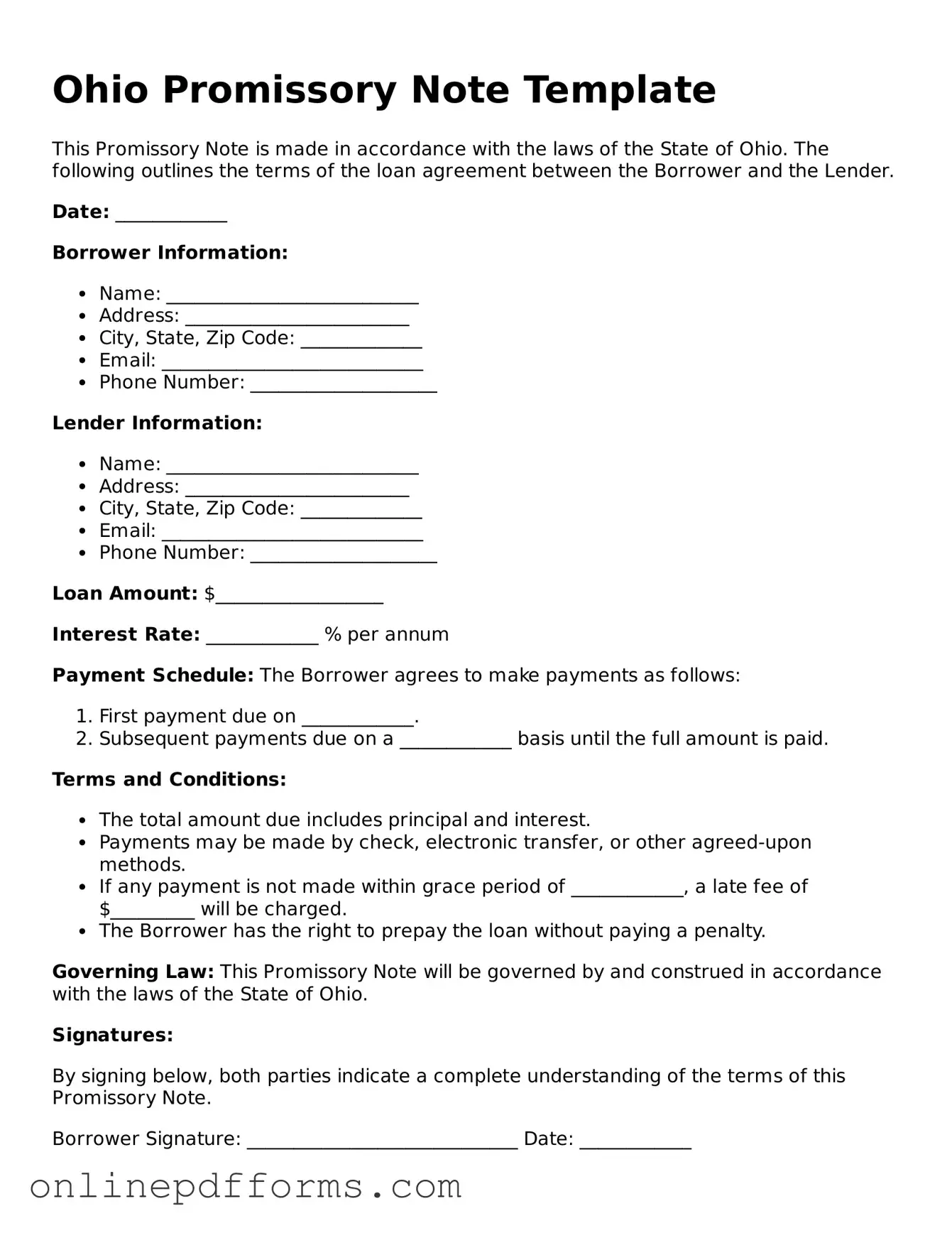The Ohio Promissory Note is closely related to a Loan Agreement. Both documents serve as formal agreements between a borrower and a lender, outlining the terms of a loan. A Loan Agreement typically includes details such as the amount borrowed, interest rates, repayment schedules, and consequences of default. While a promissory note is a simpler document, the Loan Agreement provides a more comprehensive framework, often addressing additional aspects like collateral and governing law. Both documents aim to protect the interests of the lender while ensuring the borrower understands their obligations.
Another similar document is the IOU, or "I Owe You." An IOU is a less formal acknowledgment of a debt, typically lacking the detailed terms found in a promissory note. While an IOU can serve as a simple reminder of a debt, a promissory note is a legally enforceable contract that specifies repayment terms. The clarity and structure of a promissory note make it a more reliable document for lenders seeking to secure their interests.
A Credit Agreement also shares similarities with the Ohio Promissory Note. This document is commonly used in business transactions and outlines the terms under which credit is extended to a borrower. Like a promissory note, a Credit Agreement details the amount borrowed and repayment terms. However, it often includes additional provisions such as covenants and representations, which may not be present in a standard promissory note. Both documents aim to establish clear expectations between the parties involved.
The Mortgage is another related document, particularly when the promissory note is secured by real property. A Mortgage establishes a lien on the property, providing the lender with a claim if the borrower defaults on the loan. While the promissory note represents the borrower’s promise to repay the loan, the Mortgage serves as collateral, offering additional security for the lender. Together, these documents create a comprehensive legal framework for real estate transactions.
A Security Agreement is also akin to the Ohio Promissory Note in that it outlines the terms under which collateral is provided to secure a loan. While a promissory note focuses on the borrower's promise to repay, a Security Agreement specifies the assets that will be used as collateral. This agreement protects the lender's interests by providing a legal claim to the specified assets in case of default, complementing the promissory note's terms.
For individuals engaging in mobile home transactions, the importance of a detailed comprehensive Mobile Home Bill of Sale cannot be overstated. This form provides essential documentation for legal ownership transfer, encompassing the specific details of the buyer, seller, and property involved, ensuring clarity and safeguarding all parties' rights.
Additionally, a Demand Note is similar to a promissory note but with a key distinction: it allows the lender to request repayment at any time. This flexibility can be advantageous for lenders, as they retain the right to demand payment without adhering to a fixed schedule. In contrast, a standard promissory note typically establishes a set repayment timeline. Both documents serve to formalize a borrower’s obligation, but the Demand Note offers more fluidity for the lender.
The Installment Note is another document that shares characteristics with the Ohio Promissory Note. An Installment Note specifies that the borrower will repay the loan in regular, scheduled payments over time. This structure can make it easier for borrowers to manage their finances, as they know exactly what to expect. While a promissory note may also include installment provisions, the Installment Note emphasizes the repayment schedule more explicitly, often detailing the amount and frequency of each payment.
Finally, a Guaranty Agreement can be related to a promissory note when a third party agrees to be responsible for the borrower’s debt. While the promissory note establishes the terms between the borrower and lender, the Guaranty Agreement adds an extra layer of security for the lender. It ensures that if the borrower defaults, the guarantor is legally obligated to fulfill the repayment terms. This relationship can provide additional reassurance to lenders, particularly in higher-risk transactions.
